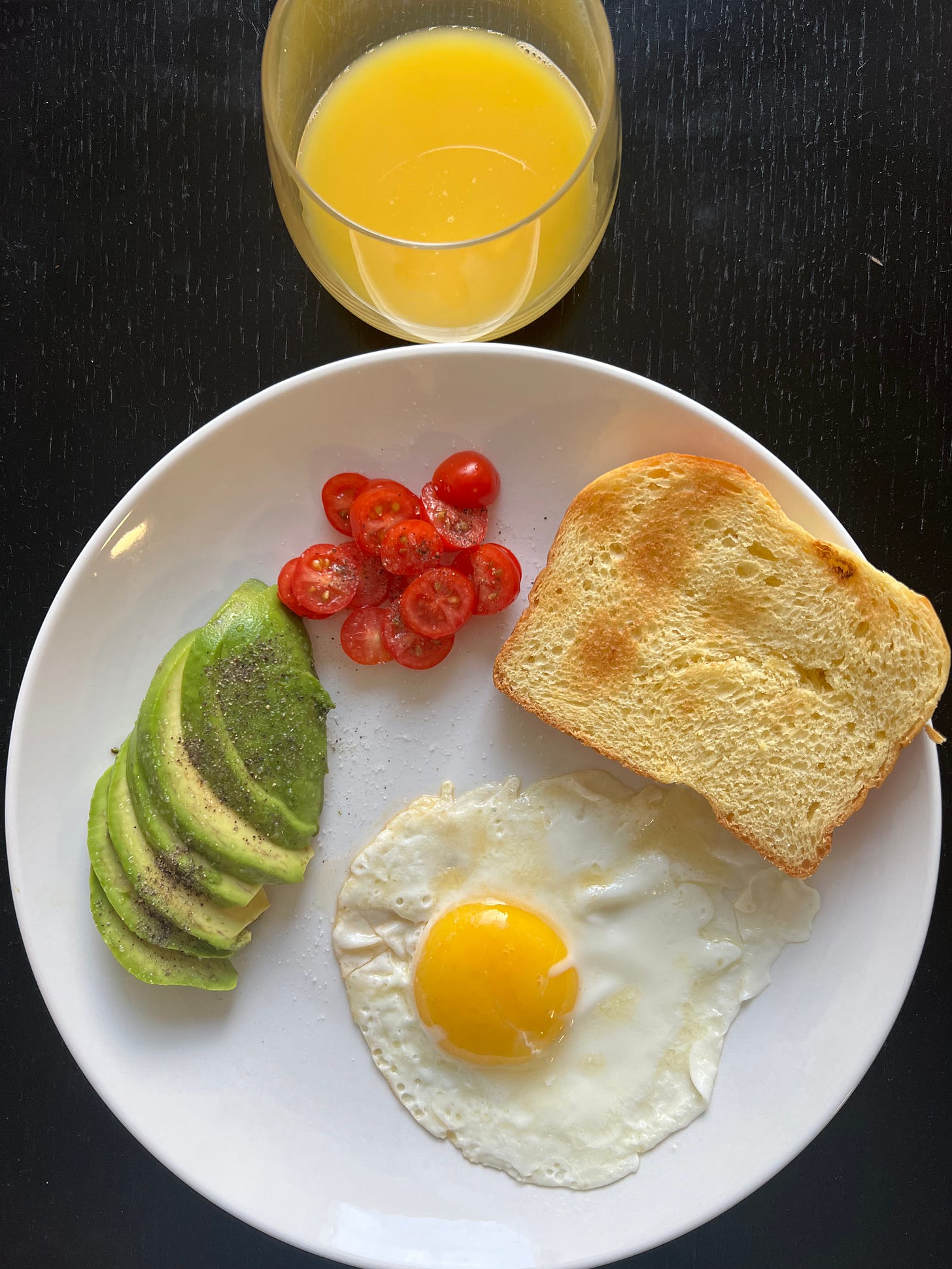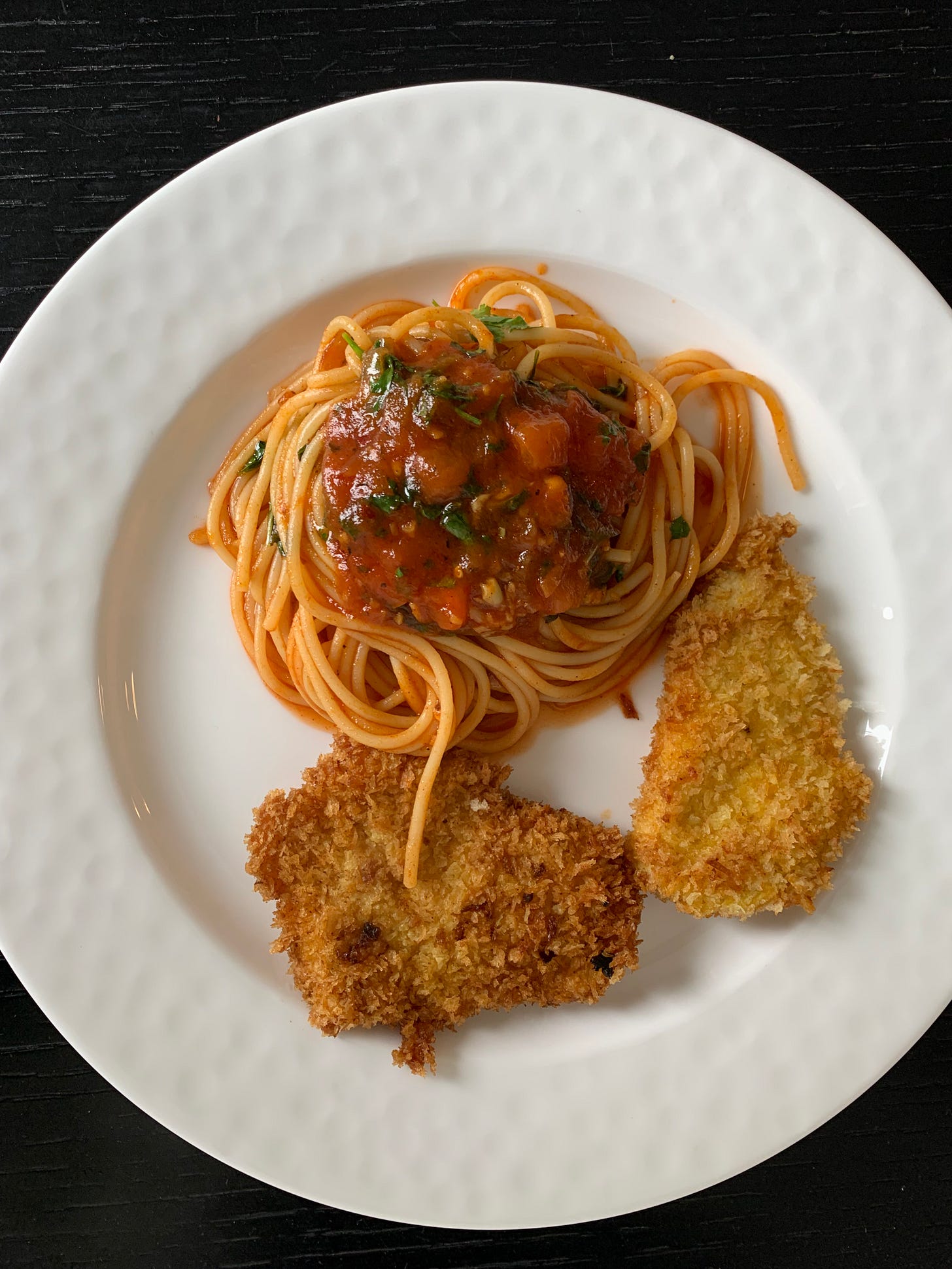Foodie Disorder: Why Tomatoes Are the Stars of Israeli and Mediterranean Cuisine
A Story Unfolding Across Timelines.
Current Time.
What Is Foodie Disorder?
I've already shared with veterans here that I have a foodie disorder. Here's a brief reminder for those reading mysteries for the first time and wondering what a foodie disorder is.
Foodie disorder is the irresistible drive to learn about food and experience it as more than just fuel for our body but as an art, a science, and a delicious journey. Those with this condition cook, dine, and daydream about meals with passion and purpose. They explore ingredients and the history of the produce we eat. For me, it manifests as an irresistible curiosity to read about what I eat, where it grows, and its journey from the growers to my plate. Along with an insatiable need to cook, a love for eating out, an obsession with taking pictures of everything I eat and posting it on Instagram stories, and endless curiosity to explore new flavors from different cultures and cuisines.
This curiosity about food also includes learning about its market and its history before everything became available year-round in supermarkets. Discover cultures that preserve specific dishes for generations and how or why these dishes helped their communities survive. Exploring a culture’s signature dishes is a journey through memory lane, which can also be an emotional experience but definitely a delicious one.
My Tomato Journey: From Childhood to Shakshuka
I love tomatoes. Since childhood, I have always loved tomatoes more than any other vegetable. Most kids I grew up with preferred cucumbers over tomatoes, but my taste was the complete opposite. As I grew older and the fruit and vegetable market in Israel developed, more varieties of tomatoes became available at farmer’s markets, grocery stores, and supermarkets. This variety opened a new world for me, and my love for tomatoes deepened even more.
My earliest memories of tomatoes are from childhood dinners. I remember eating them raw, sliced in various shapes, or in the famous Israeli salad. It’s a tiny spoiler, but I’ll dedicate a series of stories to the Israeli breakfast, which is the signature breakfast we eat not only in the morning but also in the evening. The core of it includes eggs, cheese, and vegetables. Since both my parents worked, we didn’t have breakfast at home on school days. Like most parents back then, they sent us to school with sandwiches and raw fruits or vegetables. So technically, we ate the famous Israeli breakfast in the evenings, and alongside the eggs, my favorite vegetable was the tomato.
This memory came up when I started writing the current series of stories about one of the essential signature dishes in Israeli cuisine, shakshuka. Obviously, I had to check Wikipedia’s definition to make sure I wasn’t making anything up, and I’m happy to share that my memory still works. The tomato is a plant whose fruit is commonly eaten as a vegetable. In cooking, tomato fruits are classified as vegetables and are eaten fresh or as key ingredients in various dishes.
In elementary school, I learned that agricultural produce containing seeds is considered a fruit, not a vegetable. So technically, a tomato is a fruit but is eaten as a vegetable. It sounded strange, especially since we eat fresh vegetables daily, and cucumber and tomato are the star vegetables of every Israeli family’s dinner table.
A Nostalgic Dive into Israeli Culture with Tomatoes
If I were a poet, I’d write a love song for tomatoes. If I were a director, I’d create videos glorifying tomatoes. I’d advertise tomatoes for free. Just to be clear, I mean tomatoes in general, not a brand of tomatoes. During the 1980s in Israel, we had commercials on the one and only TV channel focused on fruits and vegetables. Each commercial was dedicated to a specific fruit or vegetable and was educational, explaining why it was valuable to eat them while encouraging their consumption.
These commercials provided informative details about each fruit or vegetable and included catchy slogans to make them fun and engaging. Some slogans became so rooted in our culture that people still use them today. “קח פרי ותהיה לי בריא,” which translates to “Take a fruit and be healthy,” or “כבר נגמרו הקלמטינות?” which translates to “Have the tangerines run out already?” These commercials made me value fruits and vegetables even more.
Today, it feels like a fantasy that the government once educated the public on healthy eating habits and encouraged them to eat fruits and vegetables without promoting specific brands or using product placement. If I were a prime minister, president, or queen, I’d bring back these commercials. Why? While people know that fruits and vegetables are healthy, most don’t know why or what their nutritional value is.
Why Tomatoes Are My Superfood
This love for tomatoes isn’t just nostalgic; it’s backed by science and culture. If I had to pick two ingredients for a deserted island, it would always be tomatoes and eggs. These are my favorite ingredients, and their versatility means I’d never run out of delicious options to make from them.
Here's a glimpse of their nutritional value for those who don’t know why eating tomatoes is good for health. Tomatoes are rich in vitamins C and K, potassium, and antioxidants like lycopene, which support heart health, improve skin, and reduce the risk of chronic diseases. They’re low in calories and high in hydration, making them great for overall health. Eating tomatoes boosts immunity and promotes healthy aging. So, if you want to save money on plastic surgery and keep your body healthy, eat tomatoes.
Tomatoes on the Global Stage
Apparently, I’m not unique in prioritizing tomatoes. Tomatoes are the second most consumed vegetable in the U.S., after potatoes, with the average American eating 19 pounds of fresh tomatoes annually. Their role in American cuisine is vital, featuring prominently in pizza, pasta, and the most popular sauce, ketchup. Whether fresh, processed, or cooked, tomatoes are more than just food. They are a cultural and economic cornerstone, connecting farms to people’s tables. California and Florida lead the production of tomatoes in the U.S. Globally, and tomatoes are one of the most consumed vegetables and a staple crop. The total economic value of the U.S. tomato market, including domestic production, imports, and processed goods, was estimated to be approximately $4.6–5.6 billion in 2022.
I wonder how many of you reading this knew the importance of tomatoes in the market, their economic value, or their nutritional benefits? Did you know that tomatoes are the second most consumed vegetable in the U.S., or is this your first time learning it? Maybe it’s time to google ‘tomato’ to read about their fascinating history and health benefits because the more we take things for granted, the less we actually know about them. Take five minutes to explore the tomato’s Wikipedia page, and as a finale, Google “Liat Portal - Foodie Disorder” and go to the images view to see a variety of dishes I’ve made with tomatoes.
Beyond the Tomatoes, the Shakshuka is Just Around the Corner
We’ll wrap up this episode with a spoiler picture of the dish I cannot live without, made with a vegetable, which is technically a fruit, I cannot live without. Please welcome the shakshuka, and stay tuned for the next episode.
Please fasten your seatbelts and subscribe.
Unlock my potential to write the next great chapter in the most extraordinary story ever told. Your support would make a big difference in taking this journey to the next level.
Follow me on My Journey to Infinity to find out. It will be more beautiful than you could ever imagine.
Liat
In this journey, I weave together episodes from my life with the rich tapestry of Israeli culture through music, food, arts, entrepreneurship, and more. I write over the weekends and evenings and publish these episodes as they unfold, almost like a live performance.
Each episode is part of a set focused on a specific topic, though sometimes I release standalone episodes. A set is released over several days to make it easier for you to read during your busy workday. If one episode catches your attention, make sure to read the entire set to get the whole picture. Although these episodes are released in sets, you can read the entire newsletter from the beginning, as it flows smoothly, like music to your ears - or, in this case, your eyes.











